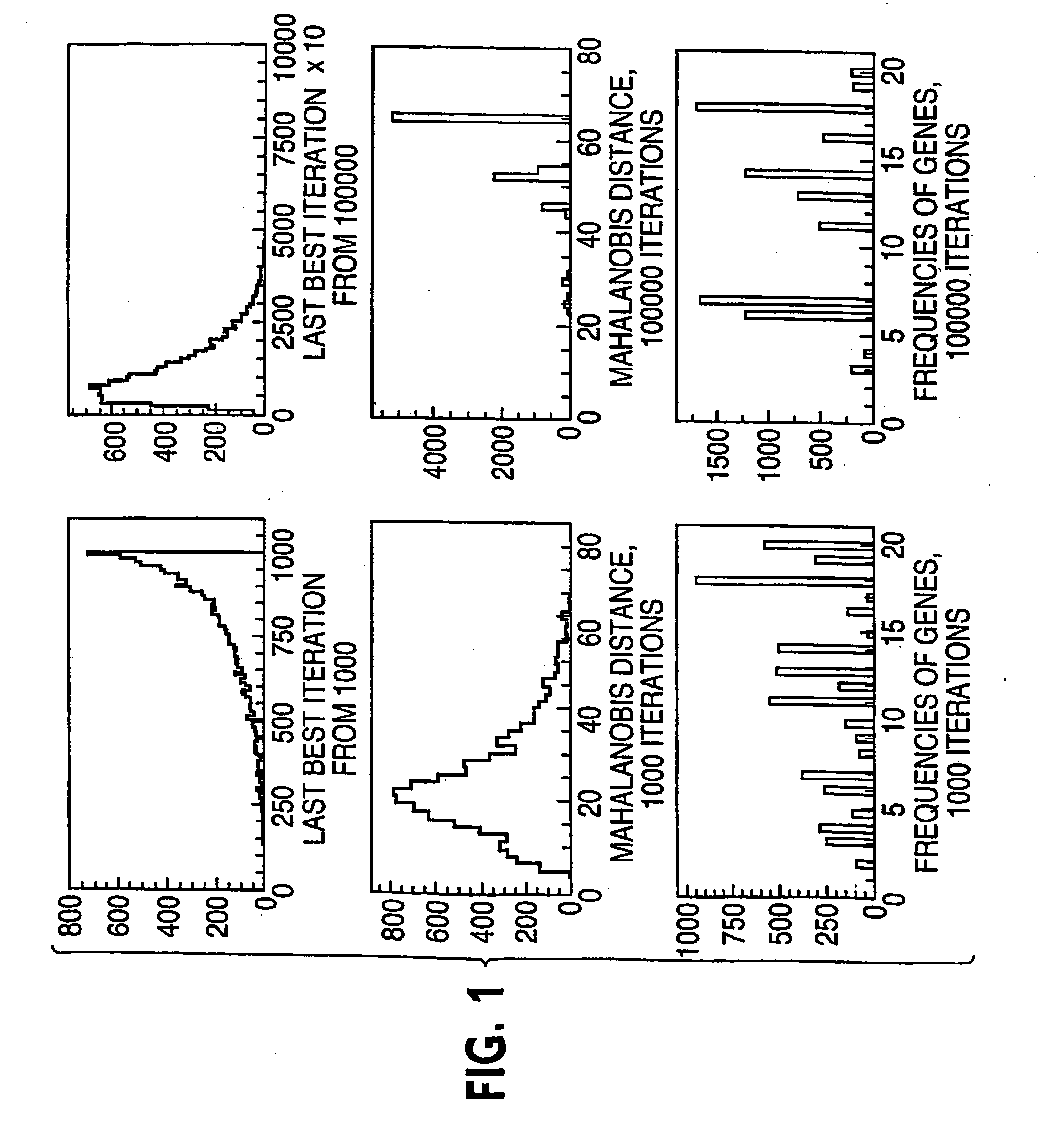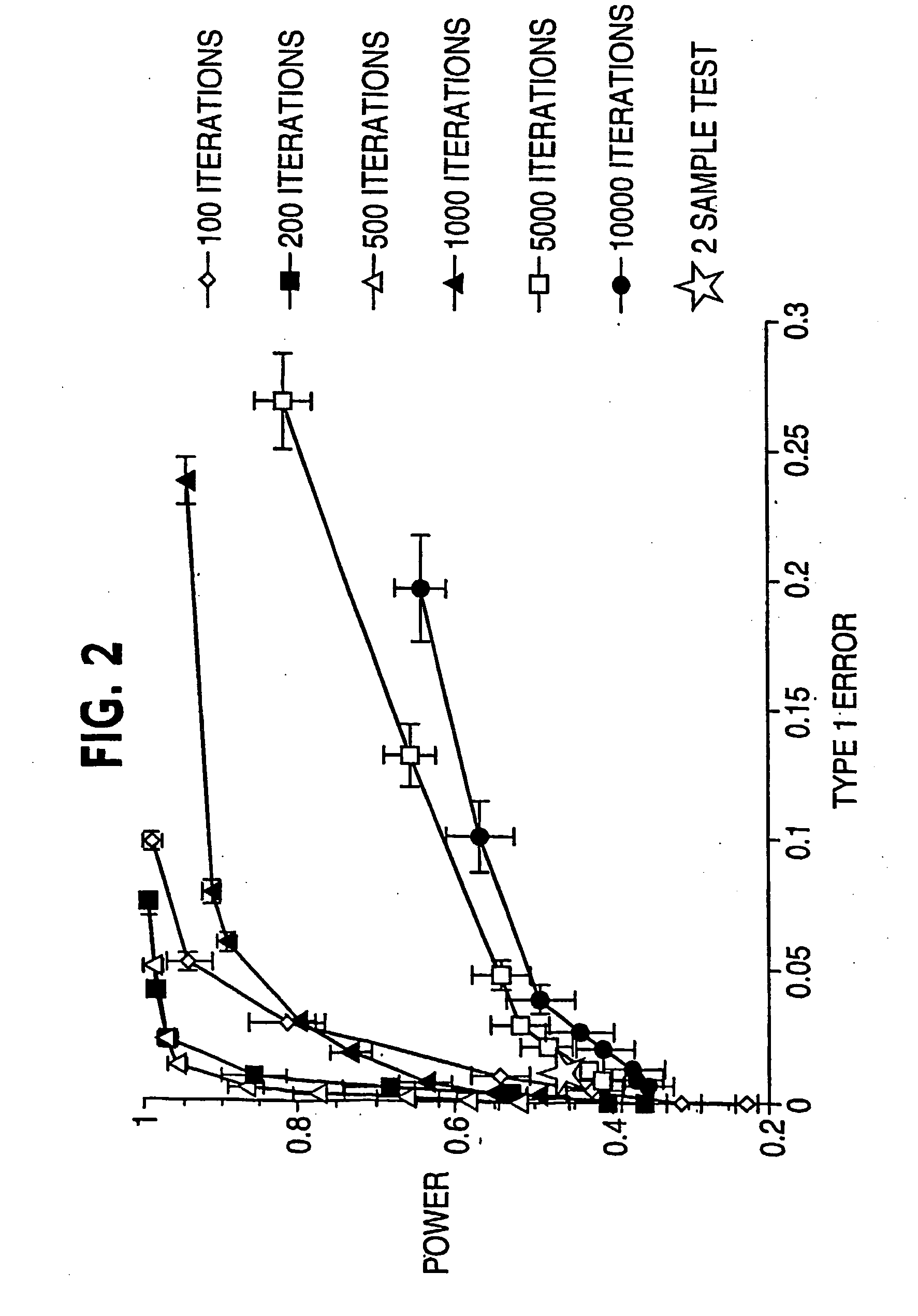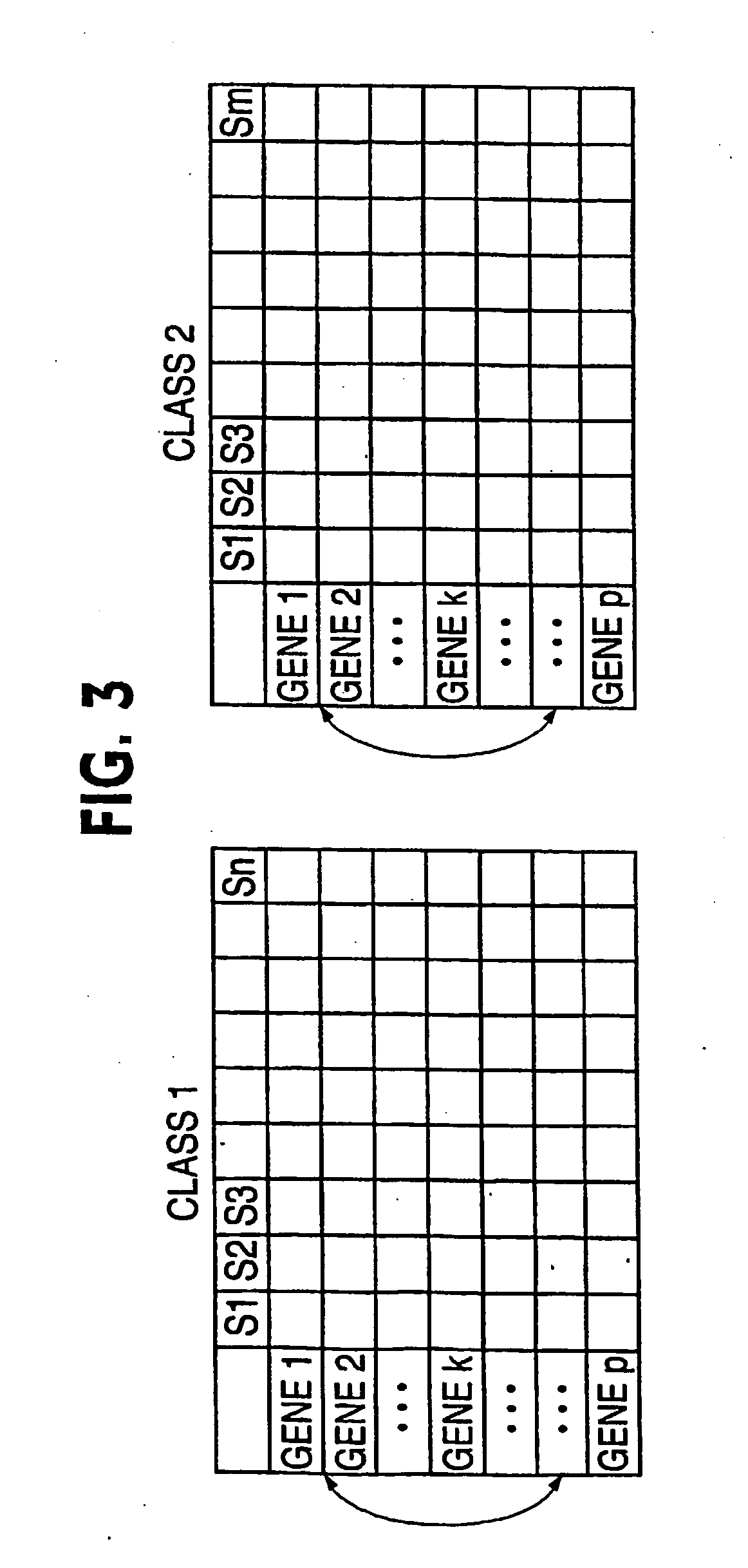Multivariate random search method with multiple starts and early stop for identification of differentially expressed genes based on microarray data
- Summary
- Abstract
- Description
- Claims
- Application Information
AI Technical Summary
Benefits of technology
Problems solved by technology
Method used
Image
Examples
example 1
A Detailed Illustration of Random Search with Multiple-Starts and Early Stop
[0045] Referring to FIG. 3, suppose there are p genes and n and m independent samples in the two classes respectively, this procedure finds a group of genes differentially expressed in these classes using information on the k-variate dependence structure.
[0046] 1. Repeat the following Niter times. Niter is not too large; early stop—stop before convergence—is implemented. [0047] a. Randomly select k genes (genes 2 to gene k in FIG. 3) that will serve as the seed of the random search. [0048] b. Calculate the distance between the two classes based on the k initially selected genes. [0049] c. Randomly select a gene (e.g., gene 2 in FIG. 3) from the current gene set (gene 2 to gene k in FIG. 3), remove it from the set and replace it with a gene randomly selected from outside of the set (e.g., any of gene k+1 to gene p in FIG. 3, let it be gene x). [0050] d. Calculate the distance between the two classes based o...
example 2
A Source Code Segment Implementing Random Search with Multiple Starts and Early Stop—Step 1 and 2 of Example 1
[0055]
Program gene1cparameter (nall=1000, ncl=10, niter=500, m=20,l=2,nt=2)parameter (ishift=3000,NCYCLE=1000)parameter (genadd=5.,disp=1.,debug=2.)parameter (expmax=20.,strang=1.e−15)parameter (kcl=5,iap=1,nex=10)parameter (pat=1.5,dpat=0.,frailty=0.2,ncls=20,purity=0.85)cCHARACTER*50 jmode,qualit, ranf,ku,stat,start,normal,mixupCHARACTER*50 sound,illDIMENSION AP(L*IAP),DEL(M*1)DIMENSION DEN((KCL+2)*L),PST(L),DFM(L*(KCL+2)*L*iap)DIMENSION F(KCL+2),DS(M*L*L*(KCL+2))DIMENSION DI(ncl),DETER(L),rank1(m),rank2(m)cdimension err(kcl+2),g((kcl+2)*l),ent(1)cDimension inum(ncl),b(nall*m*1),a(nall*m*1),cl(ncl*m*1),u(m*1)dimension e(ncl*ncl),ito(l),ind3(niter)dimension e1(ncl*ncl),e2(ncl*ncl),e3(ncl*ncl),z(nex*nex)dimension imbest(ncl),x(m*1),v(nall),m22(m*1),ind2(nall)dimension r(ncl*ncl*l),r2(ncl*l),r3(ncl*ncl*l)dimension mv(kcl),ff(kcl),dd(kcl),rr(kcl)dimension stud(nall), tkolm(na...
example 4
Microarray Expression Analysis Using Cells from Two Colon Cancer Cell Lines
[0057] HT29 cells represent advanced, highly aggressive colon tumors. They contain mutations in both the APC gene and p53 gene, two tumor suppressor genes that frequently mutate during colon tumorigenesis. HCT116 cells manifest less aggressive colon tumors and harbor functional p53 and APC. They are defective in DNA repair. The experiment was performed with three RNA samples (1 μg RNA each). Cy-3-dCTP (green) was used to label HCT116 cells while Cy-5-dCTP (red) was used for HT29 cells. Each comparison set was hybridized against two microarray slides (facing each other) containing 4608 minimally redundant cDNAs spotted in duplicate. As control, six Drosophila genes were added to the Cy-5 samples. Thus, in a red vs. green comparison they are differentially expressed by design. This experiment resulted in a total of twelve measurements on each channel for each gene on the microarrays. Although a nested dependen...
PUM
| Property | Measurement | Unit |
|---|---|---|
| Fraction | aaaaa | aaaaa |
| Fraction | aaaaa | aaaaa |
| Size | aaaaa | aaaaa |
Abstract
Description
Claims
Application Information
 Login to View More
Login to View More - R&D
- Intellectual Property
- Life Sciences
- Materials
- Tech Scout
- Unparalleled Data Quality
- Higher Quality Content
- 60% Fewer Hallucinations
Browse by: Latest US Patents, China's latest patents, Technical Efficacy Thesaurus, Application Domain, Technology Topic, Popular Technical Reports.
© 2025 PatSnap. All rights reserved.Legal|Privacy policy|Modern Slavery Act Transparency Statement|Sitemap|About US| Contact US: help@patsnap.com



